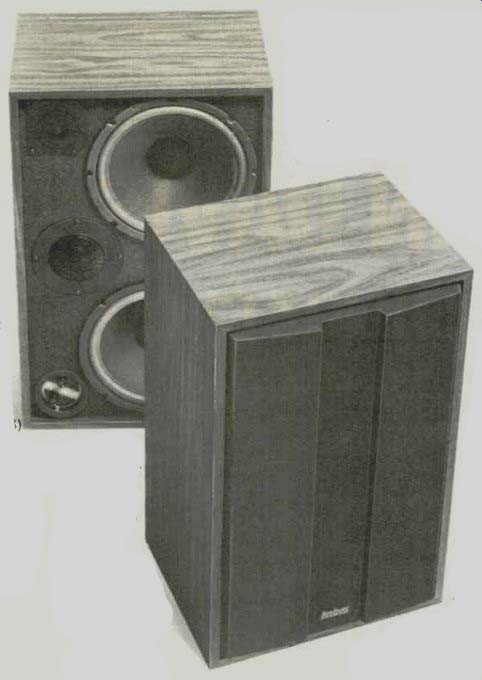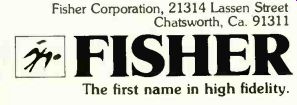
FISHER CREATED A SPEAKER SYSTEM TO OUTPERFORM YOUR RECORDS.
THE ST660.
The bandwidth of a typical record is approximately 45 to 15,000 Hz. A commercially recorded tape rarely exceeds 50 to 12,000 Hz. The Fisher ST660 reproduces music from 39 to 22,000 Hz.
Why should a speaker outperform the material it will reproduce? A loud speaker provides greatest accuracy when not required to operate at the lowest or highest extremes of its bandwidth. The wide response of the ST660 means that even exceptional records, tapes or broadcasts will be reproduced exactly as recorded.
For the same reason, the ST660 delivers greater dynamic range than necessary to recreate the softest as well as the loudest musical passages of any recording. With only 1 watt of power, the ST660 will generate 94 dB at 1 meter (conversation is about 80 dB) demonstrating its flawless reproduction at very low power levels. In a typical living room, a pair of ST660's can generate 113 dB, approximate level of a discotheque, so that the loudest music will also be reproduced without strain or distortion.
The end result is that you can use moderate power or super-power receivers to get a roomful of sound- clean sound, accurate sound.

---------Dome Tweeter Cutaway.


------ High Frequency Midrange Contour Control.
This extremely smooth response curve proves it reproduces music as naturally as is technically possible without coloring sound, without muddying the definition of instrument.
Outstanding components for outstanding sound.
The ST660 includes a 12-inch low frequency loudspeaker, augmented by a 12-inch passive radiator for extended bass. There are, also, two midrange drivers for exceptional clarity, and a pair of dome tweeters for smooth, well-defined high frequency response.
Bass Loudspeaker and Passive Radiator. The 10-inch bass speaker, having a 1 1/2-inch heat-resistant voice coil and 2 1/2-pound magnetic assembly, is reinforced by a passive radiator, a precisely tuned cone driven by the rear pressure wave of the speaker.
Two Midrange Drivers. Up front a 6 1/2-inch driver with a 2-inch dome, 2-inch voice coil and 26-ounce magnetic assembly delivers clarity and wide sound dispersion. A rear 6-inch cone midrange, driven by a 3/4-inch voice coil and 5.6-ounce magnetic assembly, reflects sound off walls and ceiling to recreate concert hall ambience.
Two Dome Tweeters. Treble accuracy is provided by two 1-inch dome tweeters. Each has a 1-inch voice coil and E.6-ounce magnetic assembly for wide sound dispersion and high power handling capacity.
The Fisher tradition Fisher is credited with starting the high fidelity industry in 1937.
The same dedication to excellence that existed then, in a modest New York City facility, still flourishes today in Fisher's ultra-modern 200,000 square foot plant in Milroy, Pennsylvania.
Perfection is the Fisher tradition. A tradition that has, over the years, resulted in an incredible number of audio innovations ... like the first coaxial speaker system and the first stereophonic receiver.
In keeping with this, the Studio Standard (ST) series are Fisher's premier loud speakers. The ST series consists of the ST660 and the more compact ST640.
To fully appreciate their performance, you will have to audition them for yourself at fine audio stores or the high fidelity section of department stores.

Fisher Corporation, 21314 Lassen Street Chatsworth. Ca. 91311, USA.
FISHER The first name in high fidelity.
-------------
(High Fidelity, Oct. 1977)
Also see:
Kenwood LS-408A speaker (ad, Oct. 1977)